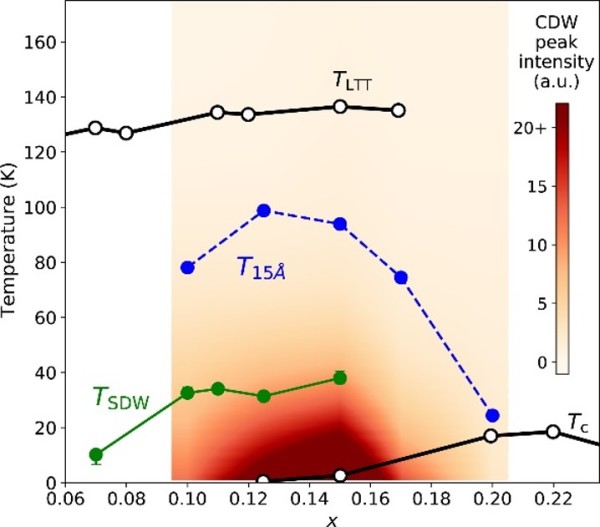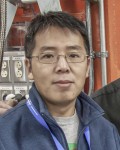Charge and Spin Density Waves in Superconducting Cuprates

Scientific Achievement
It is shown that the charge density wave (CDW) and spin-density-wave (SDW) correlations in La1.8-xEu0.2SrxCuO4 (LESCO) are strongly coupled when both are present, but the CDW persists to high temperatures where the SDW is absent.
Significance and Impact
The results suggest that all superconducting cuprates exhibit a CDW formed by a common mechanism, but material specific details modifying the CDW at low temperatures.
Research Details
- Neutron scattering measurements were used to study the temperature and concentration dependence of SDW order.
- Resonant soft x-ray scattering measurements were used to study the CDW.
- A Landau-Ginzburg model was developed and used to extrapolate the CDW wavevector to high temperatures.
“Generic Character of Charge and Spin Density Waves in Superconducting Cuprates”
Sangjun Lee, Edwin W. Huang, Thomas A. Johnson, Xuefei Guo, Ali A. Husain, Matteo Mitrano, Kannan Lu, Alexander V. Zakrzewski, Gilberto A. de la Pena, Yingying Penga, Hai Huang, Sang-Jun Lee, Hoyoung Jang, Jun-Sik Led, Young Il Joe, William B. Doriese, Paul Szypryt, Daniel S. Swetz, Songxue Chi, Adam A. Aczel, Gregory J. MacDougall, Steven A. Kivelson, Eduardo Fradkin, and Peter Abbamonte
PNAS 119, (15) e2119429119 (2022).
DOI: https://doi.org/10.1073/pnas.2119429119




